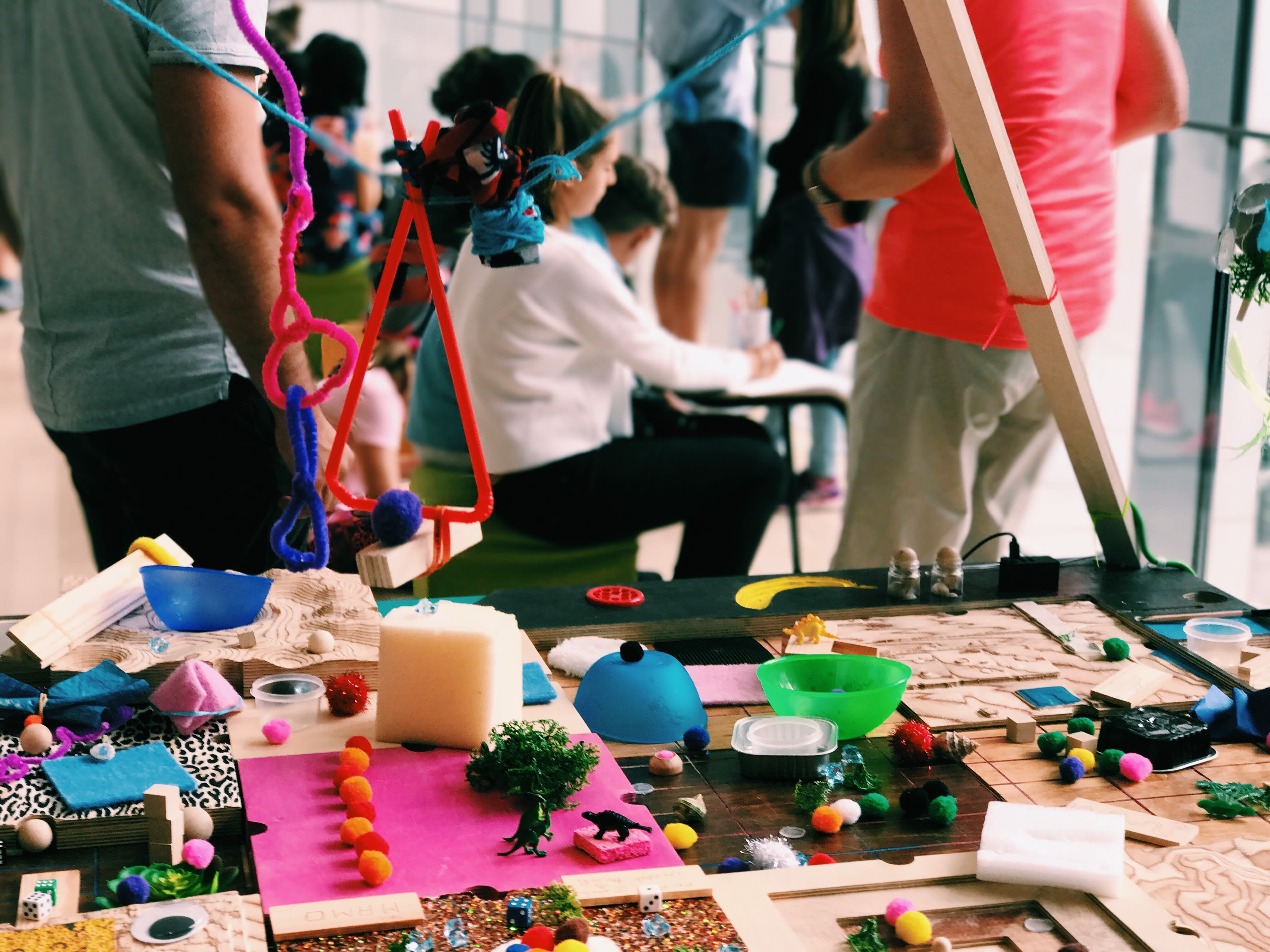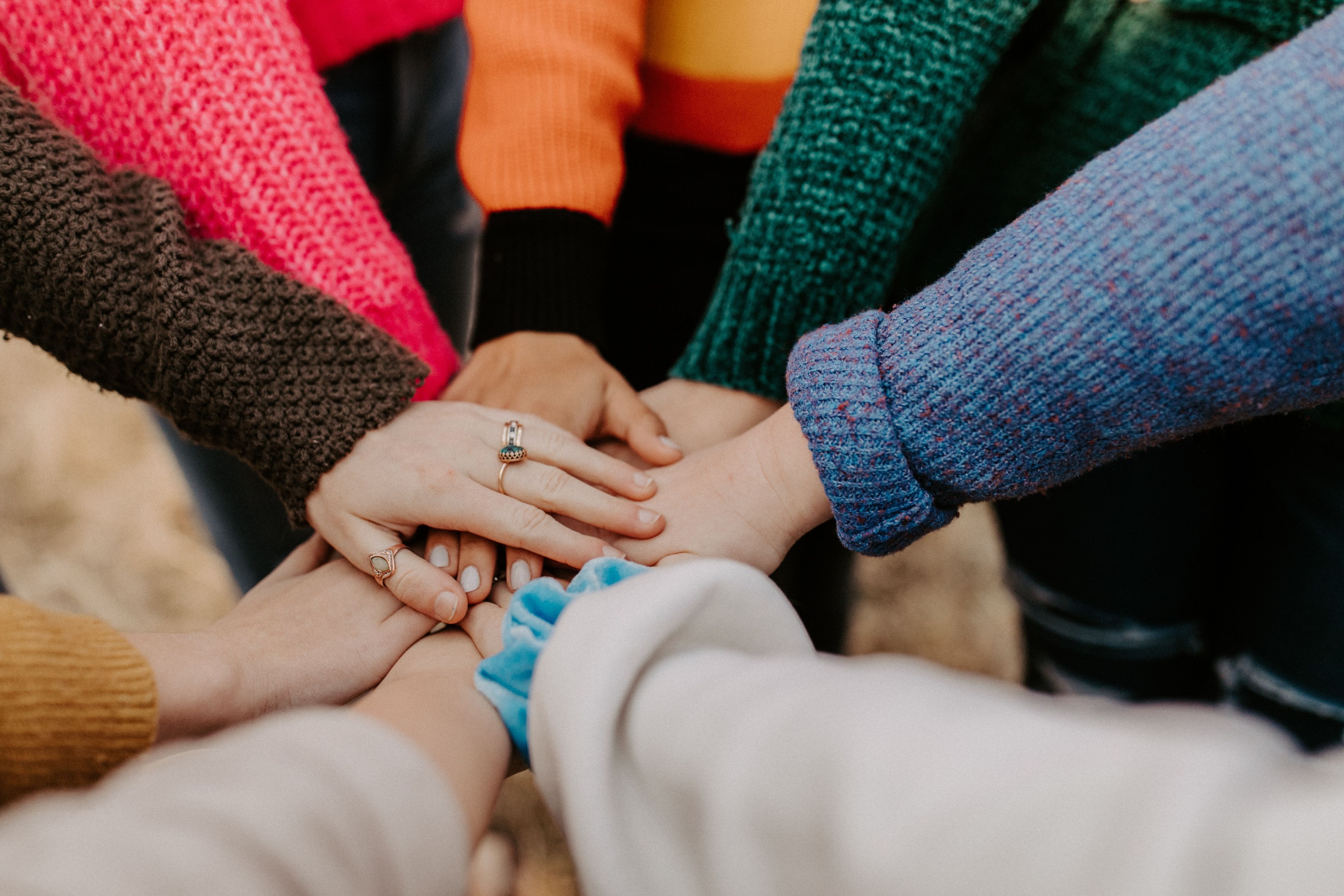A Culture of Dominance
Funding Inequities for U.S. Arts and Culture Nonprofits

How much money do you think got donated to charities in the U.S. in 2020?
A few million...?
Maybe a billion...?
All of those guesses are too low.
Americans donated $471.44 billion to charity in 2020.

Americans' Opinions on Arts and Culture
These donations, called "contributed income," include donations made by individuals, as well as grants from foundations and government entities.
While we wish all of that money went to arts and culture nonprofits, only about 4% of the $417.44 billion went to those causes. [1]
Arguments are sometimes made stating that the arts are "less important" than Health and Human Services, or Public Benefit nonprofits. Given the presence of COVID-19 during the 2020 giving year, it makes sense that more donations would go towards humanitarian efforts.
However, in a 2018 study by Americans for the Arts, Americans overwhelmingly indicated that they felt the arts were somewhat or very important to community life. [2]
More recently, a study conducted by CultureTrack released in July 2020 further proved that even during the pandemic, audiences desired to engage with arts and culture by whatever means were available.
While recognizing that the financial and emotional toll of the pandemic was widespread, the study showed that Americans were looking for missing connections through the arts. Many turned to creative hobbies such as singing or crafting during lockdown while others tuned in to digital pre-recorded and live-streamed performances. These online offerings often drew more first-time visitors than prior traditional arts and cultural programming. [3]
However, inequitable funding practices create major disparities across the sector and negatively affect communities.


Funding Disparities Across Communities
If 2% of institutions receive 60% of all contributed revenue, that means $1.74 billion of the $2.9 billion that was donated to arts and culture in 2020 went to 2% of the sector as a whole. Conversely, only $1.16 billion was distributed to the other 98% of the sector.
Billions of dollars may seem like a lot, but it doesn't go far when one considers that there are about 113,000 U.S. organizations "dedicated to many aspects of cultural life." [4]
Race
Current events have catalyzed long-overdue conversations for the sector around racial equity. As a result, many organizations are discussing and implementing Diversity, Equity, Accessibility, and Inclusion (DEAI) initiatives. While organizations are now focused on improving DEAI efforts, philanthropic practices need to be taken into consideration.
In May 2020, Jim Rendon published an article "Nonprofits Led By People of Color Win Less Grant Money with More Strings Attached," that discussed issues of "philanthropic redlining" and the flawed logic behind the approach foundations take to granting funding to minority-led organizations. [5]
Rendon presents concerning statistics, stating that 60% of the 66 African American-led organizations surveyed for the study had less than $500,000 budgets, and just 23% had reserves of 3 months or more. [6] The low budgets and lack of fund reserves are concerning for the long-term sustainability of these organizations.
Additionally, foundations view Latino-led organizations as "more risky" investments than white-led organizations, often resulting in a denial of funds from the foundation. The reason cited is a "lack of experience" working with the organization, but without the opportunity to receive grant funding, how can those organizations gain the necessary experience working with funders? [7] This mindset towards minority-led organizations creates funding disparities along racial lines.
In 2015, the Devos Institute of Arts Management at the University of Maryland conducted a study that compared financial data from the top ten highest-earning African American, Latino, and Mainstream museums, dance companies, and theatres. [8] The differences in median contributed income levels were large across years and artistic genres, with African American and Latino organizations consistently making far less in contributed revenue than their mainstream counterparts.

Budget Size and Communities
In a 2017 study conducted by Helicon Collaborative and the Surdna Foundation, researchers found that although the overall cultural landscape is evolving to become more diverse, philanthropy is not evolving with it. They present six key findings (left) that uncover inequitable funding practices at the national and local levels. [9]
The data shows that organizational budget size and community makeup are correlated with differing amounts of contributed revenue. The national findings highlight how large budget organizations, specifically those with budgets of $5 million or more, receive the largest portion of contributed revenue. This results in smaller organizations that make up a larger percentage of the arts and culture nonprofit landscape receiving significantly less funding. [10]
While the disparities between organizational budget sizes are stark, the funding gap is even more noticeable between different types of communities. While rural, low-income, and BIPOC communities make up large percentages of the U.S. population, the average percentage of arts funding that is given to these communities is much lower. [11]
These concerning disparities harm the communities in which these organizations reside. As previously stated, Americans generally believe the arts are an important part of community life, and in areas where cultural groups are dedicated to helping low-income or minority populations, it becomes a community necessity.
As stated in the Helicon study, organizations "operat[ing] in communities compromised by long-term
disinvestment by the public and private sectors...makes the work of cultural groups serving these communities especially important to the health and well-being of their residents." [12] They lead organizations that provide safe, educational spaces for residents that serve multiple important civic and social purposes within the community. While it is not always the case, it is often organizations serving these populations that face the greatest funding disparities, making it difficult for them to serve their local communities and fulfill their missions. It's a cruel cycle; most groups serving rural, low-income, or BIPOC communities are small and depend on contributed revenue that they cannot obtain because of systemic barriers. [13]

Large, mainstream arts organizations dominate the funding landscape which adversely affects disadvantaged communities.
This needs to change.

What Do We Do Next?
Organizations can...
Learn more about Community Centric Fundraising and encourage others to do the same. By learning more about CCF principles and practices through the organization's provided resources, organizations can make a deliberate choice to democratize the giving landscape and create an equitable, just philanthropic model.
Individuals can...
Choose to give their charitable donations to arts and culture organizations in their communities rather than to large, nationally recognized organizations that often receive more than enough money from other sources. A great place to start looking is GreatNonprofits.org, which provides search options by location and nonprofit type, making it easy to find deserving nonprofit arts and culture organizations close to home.

Let's make the arts landscape equal for all, for the benefit of all.

Bibliography:
Americans for the Arts. “Americans Speak Out About the Arts in New Public Opinion Poll,” May 15, 2019. https://www.americansforthearts.org/news-room/press-releases/americans-speak-out-about-the-arts-in-new-public-opinion-poll.
Americans for the Arts. “Arts Index,” May 15, 2019. https://www.americansforthearts.org/by-program/reports-and-data/research-studies-publications/arts-index.
Antenna. Group talking in front of artwork. Photograph. Unsplash. January 5, 2018. https://unsplash.com/photos/cw-cj_nFa14
Busing, Hannah. People in sweaters with their hands in the center. Photograph. Unsplash. February 20, 2020. https://unsplash.com/photos/Zyx1bK9mqmA
Candid. “Arts Funding More Concentrated Among Largest Institutions.” Philanthropy News Digest (PND). Accessed November 10, 2021. https://philanthropynewsdigest.org/news/arts-funding-more-concentrated-among-largest-institutions.
CCF. “Home.” Accessed November 28, 2021. https://communitycentricfundraising.org/.
Culture Track. “Culture Track Reports | Explore Culture Track Reports from Years Past.” Accessed November 10, 2021. https://culturetrack.com/research/reports/.
“Diversity in the Arts: The Past, Present, and Future of ...” DeVos Institute of Arts Management at the University of Maryland, September 2015. https://www.mcknight.org/wp-content/uploads/Diversity-in-the-Arts-The-Past-Present-and-Future-of-African-American-and-Latino-Museums-Dance-Companies-and-Theater-Companies-FINAL.pdf.
Faulk, Lewis, Mirae Kim, Teresa Derrick-Mills, Elizabeth T. Boris, Laura Tomasko, Nora Hakizimana, Tianyu Chen, Minjung Kim, and Layla Nath. “Nonprofit Trends and Impacts 2021.” Urban Institute, October 6, 2021. https://www.urban.org/research/publication/nonprofit-trends-and-impacts-2021.
Little, Arleta. “Racial Equity in Arts Philanthropy: A Work in Progress.” McKnight Foundation (blog), July 11, 2016. https://www.mcknight.org/news-ideas/racial-equity-arts-philanthropy-work-progress/.
Maciel, Maick. Group dancing under purple light. Photograph. Unsplash. May 25, 2021. https://unsplash.com/photos/xJFbvG1edaM
Mukai, Reina. “Arts Funding Snapshot: GIA’s Annual Research on Support for Arts and Culture,” 2021, 12.
“Nonprofit and Charity Reviews and Ratings | Donate, Volunteer, and Review | GreatNonprofits.” Accessed November 28, 2021. https://greatnonprofits.org/.
“Not Just Money: Equity Issues in Cultural Philanthropy.” Helicon Collaborative, July 2017. http://notjustmoney.us/docs/NotJustMoney_Full_Report_July2017.pdf.
NPTrust. “Charitable Giving Statistics.” Accessed November 9, 2021. https://www.nptrust.org/philanthropic-resources/charitable-giving-statistics/.
Pădureț, Dan-Cristian. Blue, orange, and purple swirls. Photograph. Unsplash. August 14, 2020. https://unsplash.com/photos/pBTaHtb20AA
Rendon, Jim. “Nonprofits Led by People of Color Win Less Grant Money With More Strings (Study),” Race to Lead. June 17, 2020. https://racetolead.org/nonprofits-led-by-people-of-color-win-less-grant-money-with-more-strings-study/.
Urban Data Catalog. “National Survey of Nonprofit Trends and Impacts Public Use Files,” October 1, 2021. https://datacatalog.urban.org/dataset/national-survey-nonprofit-trends-and-impacts-public-use-files.
Stelter, Nathan. “Giving USA 2021: Inside the Numbers,” June 15, 2021. https://blog.stelter.com/2021/06/15/giving-usa-2021-inside-the-numbers/.
Webster, Emily. Craft supplies with people making art in the background. Photograph. Unsplash. June 18, 2019. https://unsplash.com/photos/slHj-A9HQp0
